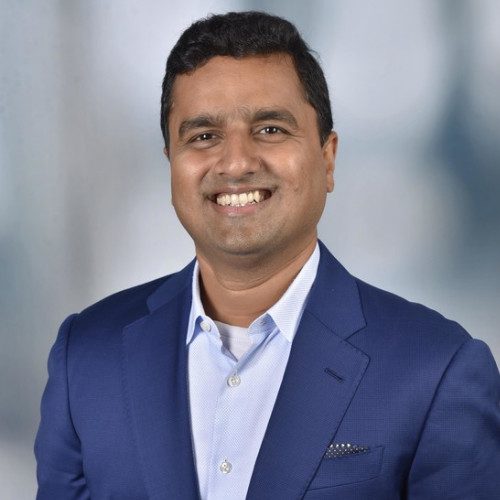
Revenue from cloud-native technologies is expected to reach new highs in 2022 as enterprises across the globe continue moving away from legacy computing, according to IT research firm Gartner.
According to Gartner, global cloud revenue is expected to reach $474 billion in 2022 — up from $408 billion in 2021 — and is on pace to surpass non-cloud revenue for relevant enterprise IT markets within a few years. The shift to cloud impacts all aspects of business, including how employers think about training, recruiting and strategic planning.
At ManTech, Sandeep Shilawat, a vice president in cloud and edge computing, said the company uses a multipronged strategy for building talent that includes educating its own through cloud computing degrees and Cloud Genius programs, as well as providing multiple certification challenges and the opportunity to work on customer missions.
“We also work closely with universities on intern programs to cultivate next-generation talent,” Shilawat said. “End result: a pool of hundreds of trained employees for the present and untold numbers of young people who may join us in the future.”
ManTech is focused on growing its strength as the industry’s “employer of choice,” with retention and talent-building as a primary goal. The company’s Innovation and Capabilities Office in the past year has unveiled what Shilawat said are “truly differentiated cloud solutions that set the standard for excellence in that sphere.”
ManTech is making similar investments across the range of its technology focus areas: cognitive cyber, analytics, automation and artificial intelligence, intelligent systems engineering, mission and enterprise IT, and data at the edge.
“When an enterprise earns a reputation as an exciting place to work with a strong focus on innovation, it becomes a magnet for great talent,” Shilawat said.
ManTech has worked closely with customers in defense, intelligence and federal civilian agencies for decades. So, the company understands its government customers’ challenges and the urgency for resolving them, Shilawat said.
“Foremost among these challenges is the need to keep pace with rapid advances in technology,” Shilawat said. “Our solution: hiring, training and retaining great talent that share our total commitment to advancing every customer mission with market-leading innovation.”
In 2021, the Navy and Marine Corps tested ManTech’s new ST3PTM tactical cloud platform that allows users to operate in disconnected, intermittent and limited environments.
“In addition, it can be deployed as a mobile cyber range, as a platform for edge intelligence, and as a platform for distillation of dirty data using cross domain solutions,” Shilawat said. “This solution also serves as a hybrid cloud platform before committing to commercial cloud vendors.”
ManTech has also launched its new vendor neutral multicloud networking architectures using zero trust for building synthetic training environments for the armed forces.
“But one of the most breathtaking achievements, in my view, is our new multi-cloud management platform, FernglasTM, a suite of capabilities to solve diverse cloud management challenges such as visibility, cost, governance and self-service via a single pane of glass,” Shilawat said.
Capturing the Full Potential of Cloud

As infrastructure is increasingly provided through next generation cloud architecture, the time to market of services is vastly improved, and solutions are easier scalable, acceleration of transformation and increased source of competitive value all come into play, said Srini Attili, a partner at McKinsey & Co.
“The value that cloud can create — over $1 trillion by 2030 based on our latest research — has made cloud a key component of our business and technology discussions with clients,” Attili said. “However, capturing the full potential of cloud has proven challenging for a host of reasons.”
In a recent McKinsey survey, 95% of respondents said lack of cloud talent and capabilities were among the biggest roadblocks they faced to transformation. Investment in cloud transformations tripled between 2017 and 2021, the company said, but the talent pool has not kept pace.
Clients are looking to migrate to cloud at pace and scale but often need help linking cloud to the overall strategy discussion, incorporating cloud into risk and compliance discussions, supporting the development of cloud capabilities throughout the organization, and overseeing and communicating cloud’s financial impact, McKinsey leaders said.
Focusing on Innovation and Capability Development

While cloud technologies are quickly becoming “the new centerpiece of digital experiences,” according to Gartner, enterprises still need help making sense of them all.
“You can’t underscore enough the need for a consultative approach to cloud migration and adoption to get to the best long-term solution for each client,” said Dan Tucker, vice president of cloud and data platforms at Booz Allen Hamilton.
“For example, in the early days of the cloud, too many organizations were quick to ‘lift and shift’ themselves out of their data center, only to find that they had just transferred their technical debt and risks to a new infrastructure,” he added. “The cost to then retroactively refactor their applications basically eliminated any return on investment. Understanding long-term priorities and planning for how best to leverage the cloud against that forecast is a critical first step.”
Tucker noted a trend among Booz Allen’s client base of more adoption of low code/no code software-as-a-service — or SaaS — solutions.
“The SaaS platforms are attaining the accreditations to serve as trusted landing zones for cloud migration and re-platforming efforts in the public sector, and they are being leveraged for production scale mission needs,” he said. “To address these growing needs, Booz Allen acquired Liberty IT Solutions last June. Liberty has best in industry experience driving mission critical digital transformation efforts which harness the power of low code/no code platforms. Their expertise complements Booz Allen’s cloud transformation portfolio and enhances the delivery of end-to-end cloud solutions for federal customers.”
As technology evolution accelerates, Booz Allen has invested in technical accelerants, repeatable patterns and reference architectures so clients can more rapidly migrate to the cloud, leverage hybrid cloud infrastructures, operate cloud native platforms, address the need for cloud at the edge, and plan for challenges associated with living in a multi-cloud environment, Tucker added.
To complement Booz Allen’s internal focus on innovation and capability development, the firm also relies on industry partners, including cloud service providers, cloud native data management platforms and low code/no code SaaS providers to architect solutions.
And within the firm itself, Booz Allen has focused its hiring and training programs on building and acquiring cloud savvy talent.
“Part of that is an investment and commitment to providing ongoing education for Booz Allen engineers and architects to keep them operating at the cutting edge, develop their skills and offer opportunities to explore and work with emerging technologies,” Tucker said.

